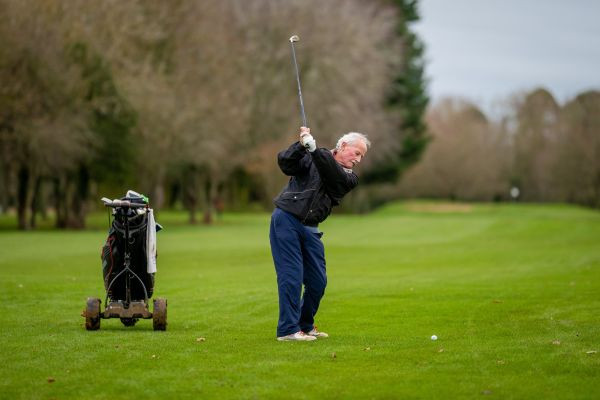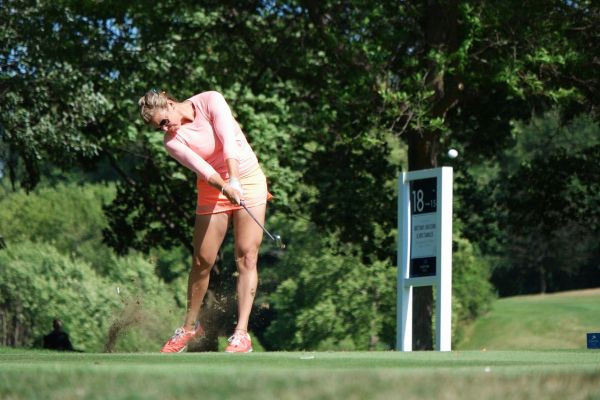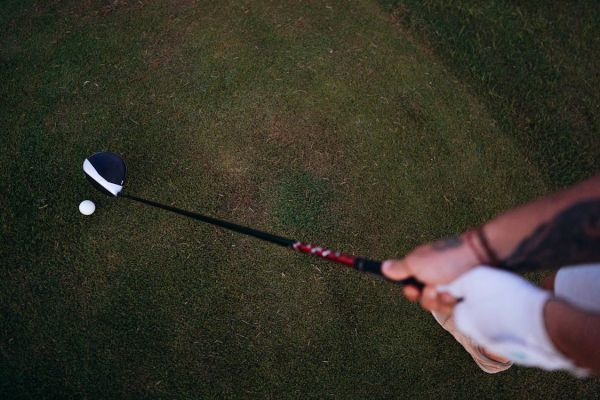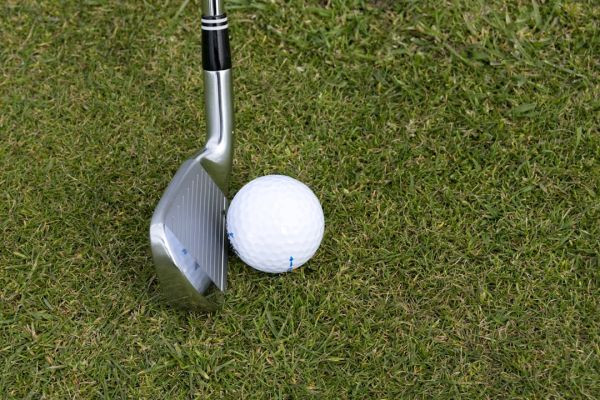How to Create an Inside-Out Swing Path in Golf
In the world of golf, the quest for the perfect swing is never-ending. One of the most critical aspects of a golfer's swing is the path the club takes through impact. A proper inside-out swing path ca..

In the world of golf, the quest for the perfect swing is never-ending. One of the most critical aspects of a golfer's swing is the path the club takes through impact. A proper inside-out swing path can lead to straighter shots, increased distance and a more enjoyable game. In this article, we will explore how to create an inside-out swing path in golf and unlock the potential for improved performance.
Understanding the Impact of Swing Path

The significance of a proper swing path in golf cannot be overstated. It's the roadmap that dictates where your ball will ultimately land. If you've ever found yourself frustrated by a slice or fade, you're likely acquainted with the ill effects of an outside-in swing path. These swings lead to a frustrating glancing blow on the ball, robbing you of both power and accuracy.
Imagine your golf club as a surgeon's scalpel and the golf ball as your patient. A precise, inside-out swing path is akin to a surgeon's steady hand, making direct, purposeful contact. On the other hand, an outside-in swing path resembles a wild, uncontrollable hand, delivering an unpredictable outcome.
The difference in outcomes is staggering. An inside-out swing path not only enables you to make solid, square contact with the ball, but it also allows you to harness the full energy of your swing. This translates to increased distance, improved accuracy and a more enjoyable round of golf. It's the difference between watching your ball soar down the fairway and seeing it fade into the rough.
Identifying Swing Path Issues
Recognizing and addressing issues with the path of your swing is the initial step towards improving your performance on the golf course. To begin this journey it's important to become an observer of your shots. Pay attention to how your shots curve – they hold insights about your swing path.
If you consistently notice that your ball curves more than 5 or 10 yards in either direction it's an indication that your swing path may be off track. The amount of curve can provide clues about the seriousness of the problem. A slight fade or draw can be manageable. When your ball slices off uncontrollably or hooks excessively it's time to address the issue directly.
Moreover, don't underestimate the impact of your clubface on this matter. The alignment of your clubface at impact is closely tied to how the ball flies. With an incorrect swing path an improperly aligned clubface can result in undesirable outcomes. Therefore, understanding how swing path and clubface orientation interact is crucial for refining your golfing skills.
The Role of Hip Position
Now let's delve into the mechanics of achieving that sought after, inside out swing path.
One aspect that is often overlooked but holds importance is the positioning of your hips. Think of them as the guiding compass, for your swing direction. To encourage an inside out motion it's essential to make an adjustment in your hip position.
Imagine this scenario; you're standing at the tee preparing to unleash a drive. Even before you begin your backswing it's crucial to have your hips on your side helping you achieve the swing path. By closing and aligning your hips to the right (for right handed golfers) you're laying the groundwork for a more fluid inside out motion.
This adjustment can be likened to calibrating a compass for navigating the course. It positions your body in such a way that swinging from the inside becomes easier thereby reducing the chances of a slice or fade. Consider it as the foundation upon which your swing is built ensuring an effective transfer of energy from your body, to the clubhead.
To practice this hip position adjustment there's a drill that can gradually embed this movement into muscle memory.
The journey to becoming a master of the inside out swing starts with your hips and this simple drill is the step towards achieving greatness on the golf course.
Weight Distribution and Its Effect
The way you distribute your weight when you address the ball is crucial in achieving that inside out swing path in golf. It's like setting up the stage for a performance. By paying attention to your weight distribution you can greatly influence how your club moves during the swing.
The key lies in favoring the inside of your body during the initial stages of your backswing. Why? Because this simple adjustment plays a role in promoting an inside out swing path. When you shift your weight towards the side (for right handed golfers) it sets off a chain reaction of favorable events.
First and foremost it naturally encourages closure of your hips. This alignment beautifully complements the inside out swing path by eliminating any tendency for hip opening, which can result in an outside in swing.
Imagine your hips as gatekeepers and your weight distribution as their position. When you keep your hips closed at the start of your swing it helps ensure that your club takes an inside out path to the ball. This sets the stage for an inside out swing, where the clubhead moves from behind you to the outside of the target line resulting in a controlled strike.
Incorporating this adjustment in weight distribution into your setup might feel unfamiliar initially. With practice it will become natural. It's an aspect of mastering the out swing path as you progress on your golfing journey.
Practicing the Inside-Out Swing
Developing an inside out swing path isn't something that happens overnight. It requires dedication, practice and a deliberate approach to training your body. To achieve this desired swing path it's important to invest time in practicing and refining your technique.
A step by step drill can be extremely helpful in developing muscle memory and consistency needed for an inside out swing. This drill breaks down the motion of the swing into parts so that you can focus on each element individually before smoothly integrating them into your full swing.
Start by practicing the drill with a shorter club, such as a mid-iron or a wedge. Begin with a relaxed grip and a balanced setup, ensuring your weight is correctly distributed toward the right side (as discussed earlier). Then, take a smooth, controlled backswing, focusing on maintaining the closed hip position.
As you transition into the downswing, visualize the ideal inside-out path for your clubhead. Your goal is to approach the ball from the inside, striking it squarely and transferring maximum power. Repeat this drill diligently, making adjustments as needed, until your body becomes accustomed to the motion.
Tracking Progress with FlightScope
When it comes to improving your swing technology can be a useful tool. FlightScope, a swing analysis tool offers data to help you monitor and enhance your progress. It's like having a trusted coach by your side providing feedback on your swing.
FlightScope precisely measures the direction of your club at impact. It allows you to see your swing path over time and quantifies it in degrees. Ideally you want a swing path that's within 3 degrees from zero indicating a straighter and more effective motion through impact.
Using FlightScope is akin to having a golf GPS system for your swing. It provides data driven insights that help you identify areas for improvement. By tracking your swing path with FlightScope you can identify any deviations from the inside out path and make adjustments to improve your technique.
Furthermore FlightScope enables you to set goals and benchmarks for your swing path transforming practice sessions into training experiences. It's not about hitting balls on the range; it's about utilizing technology to continually refine your swing.
Overcoming Common Challenges
Making the transition to an out swing might appear daunting and it's completely normal to encounter certain difficulties along the way. The path towards achieving a swing can be filled with obstacles but with determination and focused practice you can overcome these challenges and enjoy the benefits of improved golf performance.
A common obstacle that golfers often face is the temptation to fall back into their old swing habits. It's like trying to break free from a routine – your body and muscle memory have become accustomed to the swing path. Consequently maintaining the inside out path may feel like a struggle.
The key to conquering this challenge lies in perseverance. Understand that change takes time. It's absolutely fine to experience setbacks. Remain patient and committed throughout the process. Consistent and concentrated practice sessions will gradually embed the swing path into your muscle memory making it a natural part of your game.
Another challenge that many golfers encounter is the fear of overcompensating. There may be concerns that by exerting effort, in creating an inside out swing they could end up with a swing that presents similar issues as before. Finding the balance between making adjustments and maintaining a consistent swing is crucial.
The Move - Squaring the Clubface
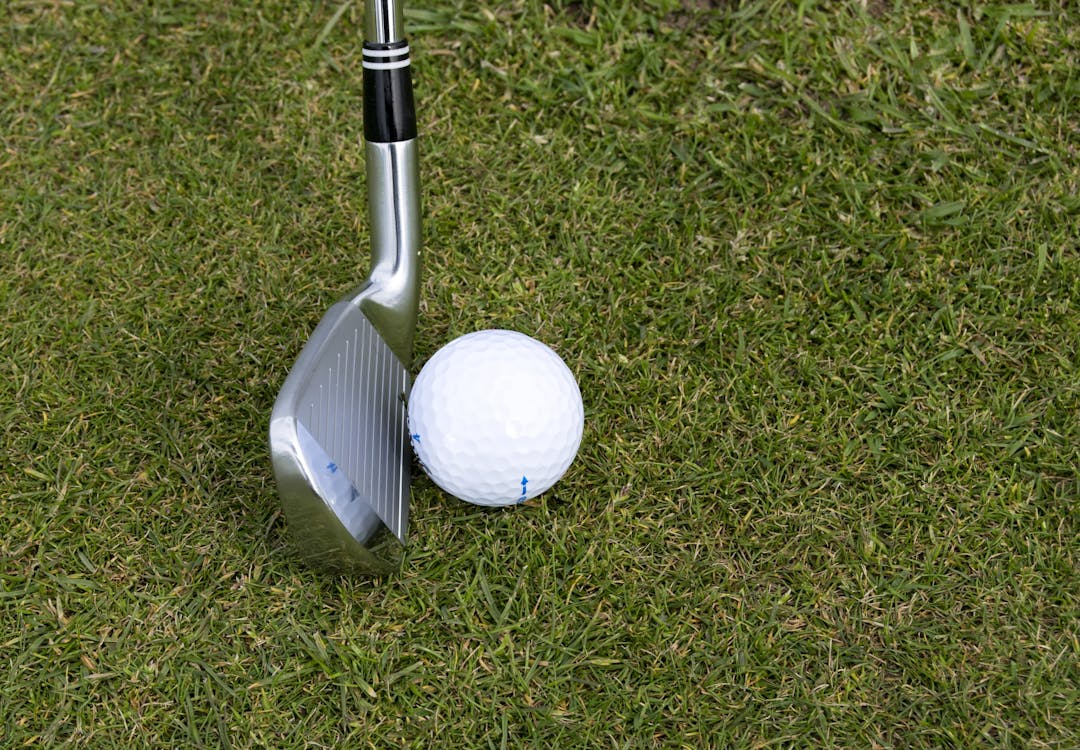
Source: https://www.pexels.com/photo/silver-wedge-golf-club-beside-ball-274133/
Mastering "The Move" is essential for achieving an inside out swing path. This crucial technique involves wrist and hand movements that play a role in aligning the clubface correctly at impact. While it might seem complicated there are drills and techniques to help you perfect this critical aspect of your golf swing.
At the core of "The Move'' lies the ability to control the orientation of the clubface throughout your swing. It's similar to guiding a horse by holding its reins with precision ensuring it stays on the intended path. The key is to maintain a grip allowing your wrists to work in harmony with your body's movements.
To practice "The Move " start by taking deliberate swings. Focus on keeping the clubface square throughout the swing from takeaway to follow through. This intentional practice will help develop muscle memory required for executing "The Move" during your swing.
It's important to understand that "The Move" is not a one size fits all solution. Each individual's swing and physical characteristics may require adjustments. Therefore it is advisable to seek guidance from a golf instructor who can analyze your swing and provide personalized recommendations to master this aspect.
Stable Fluid Spine System
The Stable Fluid Spine system is often overlooked but plays a role in improving your golf swing. This system complements the inside out swing path by focusing on maintaining an angle of your spine throughout the swing. It forms a foundation for stability and control during your swing.
Think of your spine as the anchor point of your swing. Like a tree standing tall in the wind a stable spine angle ensures that your swing remains consistent and controlled even when under pressure. Without this stability executing an inside out swing path accurately becomes quite challenging.
To work on the Fluid Spine system start by paying attention to maintaining the angle of your spine during both setup and throughout your entire swing. Ideally keep your spine at an angle to the ground ensuring that your upper body stays behind the lower body as you go through each phase of the swing.
Incorporate drills that focus on spine stability into your practice routine. These drills will help you develop the core strength and awareness required to maintain a consistent spine angle. Over time, this stability will become second nature, providing the solid foundation necessary for executing the inside-out swing path with confidence.
Achieving a Draw for More Distance
Mastering the inside-out swing path is not only about improving your swing mechanics but also about unlocking the potential for greater distance off the tee. One of the significant advantages of this refined swing path is the propensity for producing a draw shot, which, when controlled, can result in significant gains in driving distance. Let's delve deeper into how you can harness this extra power effectively.
When you successfully execute an inside-out swing path, you set the stage for a draw shot. A draw is a golf shot that curves gently from right to left (for right-handed golfers) in the air. This curvature is a product of the clubface being slightly closed to the swing path at impact. While it may sound complicated, achieving a draw can be a game-changer in terms of distance and accuracy.
The draw imparts a unique advantage: it maximizes the roll after the ball lands. Picture your ball as a bowling ball rolling down the fairway. With a well-controlled draw, you can add significant yards to your drives. The ball not only travels through the air efficiently but also gains additional distance as it rolls upon landing.
Realizing the Distance Gains
To truly appreciate the potential distance gains from mastering the inside-out swing path, let's consider a success story. Imagine you've been diligently working on improving your swing path, transitioning from an outside-in motion to a more efficient inside-out swing. Now, it's time to quantify the improvements.
Start by conducting a before-and-after analysis. Compare your previous golfing results, particularly your driving distances, with the new swing path you've developed. You'll likely notice a remarkable difference in your performance.
Take, for example, your previous drives that covered a certain distance. As you consistently implement the inside-out swing path, you'll observe a noticeable increase in the yardage you achieve off the tee. This extra distance isn't solely a result of swinging harder; it's a direct consequence of harnessing the club's energy more effectively.
Moreover, the controlled draw that accompanies the inside-out swing path allows you to place your shots strategically on the fairway. You're not just hitting it farther; you're hitting it smarter. This combination of distance and accuracy can significantly improve your scoring and overall golfing experience.
Ingraining the Correct Technique
Although it's exciting to see the distance improvements that come with an inside out-swinging path, it's important to remember that consistency is the key to unlocking its potential. Consistency in golf comes from building muscle memory and practicing with intention. To truly make the correct swing path feel natural you need to dedicate yourself to improving it
Start by incorporating your newfound inside out swing path into every practice session. Focus on executing the technique from setting up to following through smoothly. Remember, it's not about making changes to your swing every time; it's about reinforcing the path you've developed.
Repetition is crucial on this journey. The more you practice the more ingrained the inside out swing path becomes. It becomes a part of your golfing style effortlessly guiding your swings. Consistency breeds confidence and when you're confident in your swing you're ready for success on the golf course.
Consider seeking guidance from a golf professional who can offer drills and feedback to help reinforce your technique. Additionally approach each practice session with goals in mind so that you can make progress towards improving your game.
When it comes to improving your golf game, honing skills such as clubface control, hip alignment and spine stability can greatly enhance your ability to execute an inside-out swing path.
Conclusion
Mastering the art of an out swing path is crucial for achieving accuracy and power in golf. By understanding its significance, identifying any issues you may have and concentrating on elements like hip positioning and weight distribution you can significantly improve your swing path. Elevate your game. Utilizing tools like the Fluid Spine system and "The Move" can provide support on your journey towards developing a better golf swing. With dedication and practice you'll be able to achieve the desired inside out swing path, unlocking distance and improved ball flight.
Frequently Asked Questions (FAQs)
What is an inside-out swing path in golf?
An inside out swing path in golf refers to the direction that the golf club should follow during your swing. It involves approaching the golf ball from inside the target line with the clubhead traveling on a trajectory that's slightly right of the target (for right-handed golfers).
How does the path of the club affect my golf shots?
The way you swing the club has an impact on how your golf shots turn out. If your swing path is incorrect like approaching the ball from outside the target line it can result in a glancing hit that reduces both power and accuracy. This often leads to shots that slice or fade too much. On the other hand if you have an out swing path you can make solid contact with the ball and efficiently harness the club's energy. This usually leads to shots or controlled draws offering both distance and accuracy.
What are common signs of an incorrect swing path?
There are several indications that suggest an incorrect swing path. Slicing, which is characterized by a curve for right handed golfers (or leftward curve, for left handed golfers) often indicates an outside in swing path.
On the other hand if your shots consistently curve to the left ( for right handed golfers) or to the right (for left handed golfers) it's possible that you unintentionally have an inside out swing path but struggle to control it resulting in hooks. Moreover an incorrect swing path often leads to ball contact resulting in mishits and reduced distance robbing your shots of power. The frustration of shot placement and control issues may also indicate that an incorrect swing path is affecting your game.
Can I practice an inside-out swing path without specialized equipment?
Absolutely! You can work on developing an out swing path without relying on equipment. While tools like launch monitors and swing analyzers can provide feedback you can make improvements with basic golf equipment and focused practice. Spend time at the driving range or even in your backyard paying attention to your setup, weight distribution and hip position. Using mirrors or alignment sticks can be helpful too. Alternatively simply visualize the path as you practice your swings.
How long does it typically take to see improvement in my swing path?
The time required to see progress in improving your swing path varies from golfer to golfer. It depends on factors such, as your skill level, how frequently you practice and the quality of instruction or guidance you receive.
For some golfers they may start seeing improvements within a week of practice. However it's important to note that for others it might take months before noticeable progress is made. The crucial factor here is dedication and patience. Make sure to focus on honing your technique and regularly evaluate how you're progressing.












